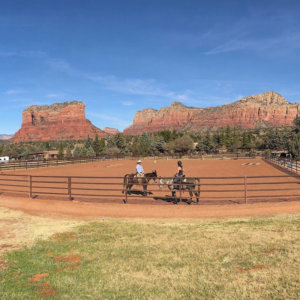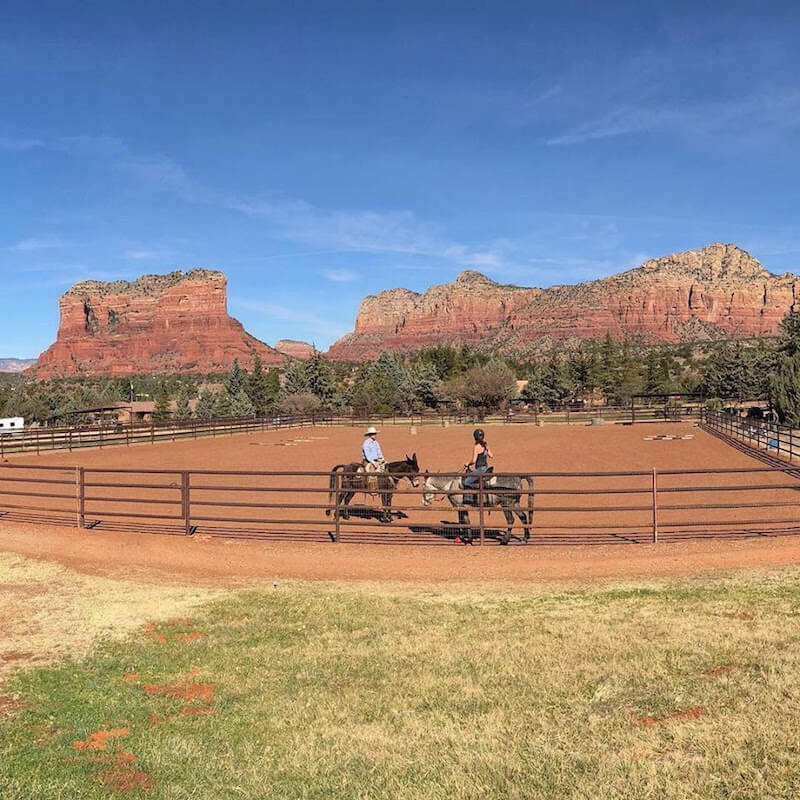6 Tips to Improve Your Clinic Experience
By Robert Eversole
Horsemanship clinics have become quite the to-do amongst us in the equine world. More and more people are attending clinics of various types and flavors in hopes of improving their horsemanship skills. Indeed, most of my friends have been clinic attendees at some point.
As usual I was late to the party. My first equine clinic experience occurred just recently with Ty Evans of TS Mules. It was fantastic. My mule Ruger and I both learned a lot and are looking forward to attending another in the future. I wish I had attended sooner. If you’re interested in becoming a better horse or mule person, don’t wait as long as I did.

So why attend a clinic? I had three main goals in mind when I signed up for Ty’s Mulemanship clinic: instruction, investigation, and socializing. Ever since my encounter with gravity last year, riding hasn’t been pleasant. Not because of anything Ruger did, but because of the nagging worries and “what-ifs” that I felt when on him. After meeting Ty in person last year, I knew that he’d be an excellent resource to help me get joyfully back in the saddle with good form. And what about the socializing side of the equation? The clinic was hosted by the North Idaho Saddle Mule Club, which has a reputation for feeding people well (very well).
Attending Ty’s clinic—both for riders and spectators—was an inspiring, motivating and very fulfilling event. I was able to observe, explore new ideas, and immerse myself in being a better horseman during the entire event. It was a great opportunity to learn from a renowned professional, expand my horsemanship skills and grow as a rider.
With that in mind here are six tips to help make your clinic experience great.
1. Know What to Expect
Contact the clinician directly and visit their website to learn what will be covered at the clinic. Do the subjects covered coincide with your goals? If you want to improve your riding, a clinic that consists solely of ground work might not meet your needs. You wouldn’t want to take a green colt to a horsemanship clinic where everyone is expected to ride.
Ask if the featured clinician will be the person teaching the clinic. Some big name clinicians may only make an appearance––farming out the actual work of conducting the clinic to an understudy. I’m glad Ty was there teaching the entire time for both of the clinics I attended. Your time is precious, and money is hard to come by. Make sure you’re signed up for the right clinic to meet your goals.
2. Be Physically and Mentally Prepared
Riding in a clinic could require being in the saddle up to eight hours a day. If you and your horse are weekend warriors, this could be quite taxing. An animal that’s been lounging in the back pasture for the past year before being taken to a clinic will keep you from taking full advantage of the scheduled activities.
Start getting yourself and your horse physically and mentally “legged-up” before the clinic date rolls around. Being physically fit and prepared will help both of you get the most from your clinic experience. I signed up for two back-to-back clinics (Mulemanship I & II). By the end of each day Ruger and I were both exhausted in every sense of the word.
3. Make Sure Your Trailer is in Order and Your Horse Loads
If your trailer has been sitting for months, it’s time for a good look-over and perhaps even some maintenance. Check things out a week or two before the clinic, including loading, so you don’t run into problems the morning you try to leave. While I went over the trailer, I neglected to include enough practice time loading Ruger into the new rig. It was quite embarrassing to need help loading at the end of the clinic!
4. Don’t Be Afraid
If the clinician asks for a volunteer, step up! Be the guinea pig. Let the clinician use you and your horse for every example possible. Sometimes you’ll look like a star. Occasionally you won’t. But you’ll learn something and gain valuable experience.
5. Don’t Be Shy
You’ve sacrificed time and money to participate in the clinic. Don’t disappear into the crowd. Ask questions. If you’re struggling with an exercise, ask for help. Ask for an explanation if you don’t understand the directions. Ask the clinician to observe your maneuver and critique your performance. Most clinicians want and like riders who are hungry for knowledge and want to learn.
6. Spectating Can Be Great
My much better half, Celeste, audited Ty’s Clinics while I rode. She learned a tremendous amount and is looking forward to attending Mulemanhip I and II with her Icelandic horse next year. (Yes, Ty helps horses with people problems just as much as he helps mules.) Without the pressure and responsibility of riding herself, she could still grasp the concepts and see Ty’s techniques played out on multiple animals. You can learn a lot by observing.
Visit Ty Evans website (www.tsmules.com) to learn more about him and reserve a spot at one of his clinics if you’re so inclined.
As always to find new places to ride and camp, as well as how to have more fun while you’re there, visit www.TrailMeister.com
Published September 2018 Issue

Robert Eversole, ”the trail meister,” owns www.TrailMeister.com, the largest database of horse riding and camping areas in the U.S. with free trail and trailhead information, trail maps, and much more to help horse enthusiasts experience the joys of trail riding. Robert is a registered riding instructor with PATH International, a mounted search and rescue team member, and a U.S. Marine who has served on the board of the Backcountry Horsemen of Washington (BCHW). He is enjoying his new career helping fellow trail riders stay found and safe on the trail. When not on the trail, The Trail Meister resides near Spokane, WA and teaches land navigation to a wide variety of outdoor groups across the nation. For North America’s largest horse trail and camping directory, trail tips, and more, visit www.TrailMeister.com.

